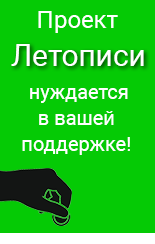STEM
(→STEM и наука карт) |
(→Определение) |
||
| Строка 1: | Строка 1: | ||
=== Определение === | === Определение === | ||
| − | Science, Technology, Engineering and Mathematics (STEM, previously SMET) is an acronym that refers to the academic disciplines of science, technology, engineering and mathematics. The term is typically used when addressing education policy and curriculum choices in schools to improve competitiveness in science and technology development. It has implications for workforce development, national security concerns and immigration policy. | + | Science, Technology, Engineering and Mathematics (STEM, previously SMET) is an acronym that refers to the academic disciplines of science, technology, engineering and mathematics. |
| + | * Science, Technology, Engineering, and Mathematics (STEM) are the driving force for worldwide economical and social advancements. | ||
| + | |||
| + | The term is typically used when addressing education policy and curriculum choices in schools to improve competitiveness in science and technology development. It has implications for workforce development, national security concerns and immigration policy. | ||
; STEAM - STEM + ART | ; STEAM - STEM + ART | ||
Версия 08:14, 3 ноября 2016
Содержание[убрать] |
Определение
Science, Technology, Engineering and Mathematics (STEM, previously SMET) is an acronym that refers to the academic disciplines of science, technology, engineering and mathematics.
- Science, Technology, Engineering, and Mathematics (STEM) are the driving force for worldwide economical and social advancements.
The term is typically used when addressing education policy and curriculum choices in schools to improve competitiveness in science and technology development. It has implications for workforce development, national security concerns and immigration policy.
- STEAM - STEM + ART
- Перевод на русский
- Наука, Технология, Инженерия, Математика.
- НТИМ
- НТТМ - научно-техническое творчество молодежи
- STEM –это одно из направлений реализации проектной и учебно-исследовательской деятельности в школе
STEM - как сфера деятельности
STEM is dynamic and complex, and if its link to Innovation and Competitiveness is obvious from the inside looking out, it is deeply obscure from the outside looking in.
- Börner K. STEM: Individual, Local, and Global Flows and Activity Patterns // ResearchGate. 2009.
STEM и наука карт
The skills needed by the 21st century STEM workforce include:
- The ability to interact with large amounts of data. Facility with visual metaphors and granularity for both static and dynamic data streams is needed in order to see patterns in complex data.
- The ability to understand the changing role of models. The higher-order thinking associated with model development allows both exploratory and inductive skills to be used to identify general patterns and characterize their behavior across a wide range of differing environments and processes.
Students in the STEM “pipeline” need to be prepared for this new reality as they enter the modern day workforce and higher education. However, exposure to these data-driven science skills is unavailable to most primary and secondary school students. Furthermore, summer or academic year research experiences for high school students under researchers’ guidance are often inaccessible to disadvantaged young learners. Such lack of access sends students down a path
Карты науки для детей или наука карт для детей
- 1. Börner K. [и др.]. Teaching children the structure of science International Society for Optics and Photonics, 2009. 724307–724307 с.
We also design science maps for children. These maps show the raw data but we added water color paintings to major areas of science.
И здесь уже связь STEM с тем, что называется Сетевая наука и Наука карт - почему необходима сетевая наука или наука карт?
The prevailing process for learning science, math and technology continues to embrace specialization and teaching topics and disciplines as separate entities. Mathematics, physics, biology, and many other subjects are taught in isolation by different teachers. However, science – particularly today – is highly interdisciplinary and interconnected.
- Изучение естественных наук, математики и технологии по-прежнему преимущественно организовано как изучение отдельных тем и отдельных дисциплин. Математика, физика, биология, и многие другие предметы преподаются разными учителями изолированно. Однако, наука - особенно сегодня - междисциплинарна и взаимосвязана.
Almost all of humanity’s major challenges require a close collaboration of scientists from different disciplines. The lonely genius, filled with vision and driven to exhaustion by his or her dream has little chance to succeed. Breakthrough research or inventions cannot be produced ex nihilo. Cutting edge science involves very large datasets, advanced computational infrastructures and visualization techniques, and a close collaboration with computer scientists and engineers.
STEM образование в России
STEM - это естествознание (физика, химия, биология), технологии (включая программирование), инженерия (включая робототехнику) и математика. Образование в области STEM является основой подготовки сотрудников в области высоких технологий. Поэтому многие страны, такие как Австралия, Китай, Великобритания, Израиль, Корея, Сингапур, США проводят государственные программы в области STEM-образования. В России тоже понимают эту проблему – открывают Центры технической поддержки образования (ЦТПО), в которых частично решатся задачи привлечения учащихся к инженерному делу и роботостроению.
- STEM-центры в России: http://stemcentre.ru/
- Сообщество педагогов естественно-научных дисциплин, математки, ИКТ, робототехники и научно-технического творчества, руководителей исследовательских и инженерных проектов. В сообществе публикуется и обсуждается информация, связанная с развитием STEM образования в России. https://plus.google.com/communities/112772614174573915788
